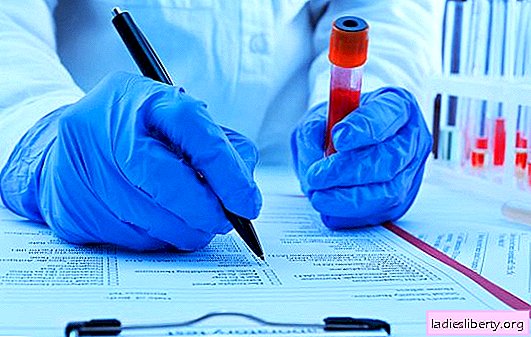
Rapid detection of Ebola virus infections is one of the most important steps in the fight against the epidemic in Africa. American researchers have developed a simple test that detects acute Ebola disease within 30 minutes. It differs from other similar analyzes with high accuracy and low financial costs.
How dangerous is the Ebola virus?
In October 2014, the global community was shown the possible prevalence of the Ebola epidemic in West Africa. Then about 9,000 people were infected, of which 4,400 died.
The possible future development figures presented at that time by the World Health Organization (WHO) were alarming.
Scientists believe that the outbreak of the epidemic in other places cannot be 100% excluded.
An important tool against the spread of the disease is timely diagnosis.
Failure to significantly reduce the level of infection leads to 10,000 new cases per week. As a countermeasure, the so-called "70-70-60" plan was presented. Within 60 days, at least 70% of those infected should be hospitalized and receive adequate treatment. 70% of those killed should be buried safely to prevent the spread of the virus.
The plan was implemented in some areas of Ebola, but not in all. In 2018, 21,296 cases of infection and 8,429 deaths were recorded. WHO insists that only reliable and quick analysis can reduce the number of new cases of the disease.
What analysis did American scientists develop?
Until now, there has not been a quick analysis that would allow doctors to distinguish Ebola from malaria.
The new technique was developed by a team led by Christine Weidemeyer of the American medical company Becton.
The analysis is based on a phenomenon that the Indian physicist K.V. Raman discovered in 1928. It describes inelastic scattering of light, which depends on the molecules in the sample. In the 1970s, it was revealed that Raman scattering can intensify when molecules are on metal surfaces. It also allows the detection of smaller amounts of virus in the sample.
US researchers put gold particles in a silicone capsule in a clinical trial. Antibodies that bind certain viruses have been attached to the surface of the gold. Because different viruses change Raman scattering in different ways, spectroscopy can detect many species in a blood sample. The analysis can be performed on whole blood in a test tube, which should then be disposed of.
Researchers tested a new analysis on 586 blood serum samples in Senegal and Guinea. Samples from Senegal were obtained from patients who were treated for febrile illness in an epidemic of malaria. They served as controls in the “field studies,” since there were currently no cases of Ebola in Senegal.
Guinea samples were collected during the 2014 Ebola epidemic. In earlier studies, malaria parasites were discovered in addition to Ebola viruses.
What are the results of studies of the new analysis?
A new Ebola test was almost always able to confirm the presence of a viral infection. Ebola detection was achieved with a sensitivity of 90.0%, a specificity of 97.9%, which gives an overall accuracy of 96.6%. For malaria, a sensitivity of 100% was achieved with a specificity of 99.6%, which corresponds to an overall accuracy of 99.7%.
The average virus detection time is 20 minutes.
The researchers also developed an analysis of Lassa fever, which so far has not been able to quickly and efficiently be detected. Modern analysis can be adapted to all pathogens found in the region. Using a special technique, the doctor will be able to quickly distinguish malaria from Ebola, and prescribe the appropriate treatment.
Another study showed that the analysis is not 100% reliable. 3 out of 20 samples gave a false negative result. It cannot be ruled out that in the event of an epidemic, patients who are infected with the Ebola virus will be sent home.
All patients who did not identify the disease had a low concentration of the virus in the blood.
However, there is good news: the analysis worked on repeated use.











